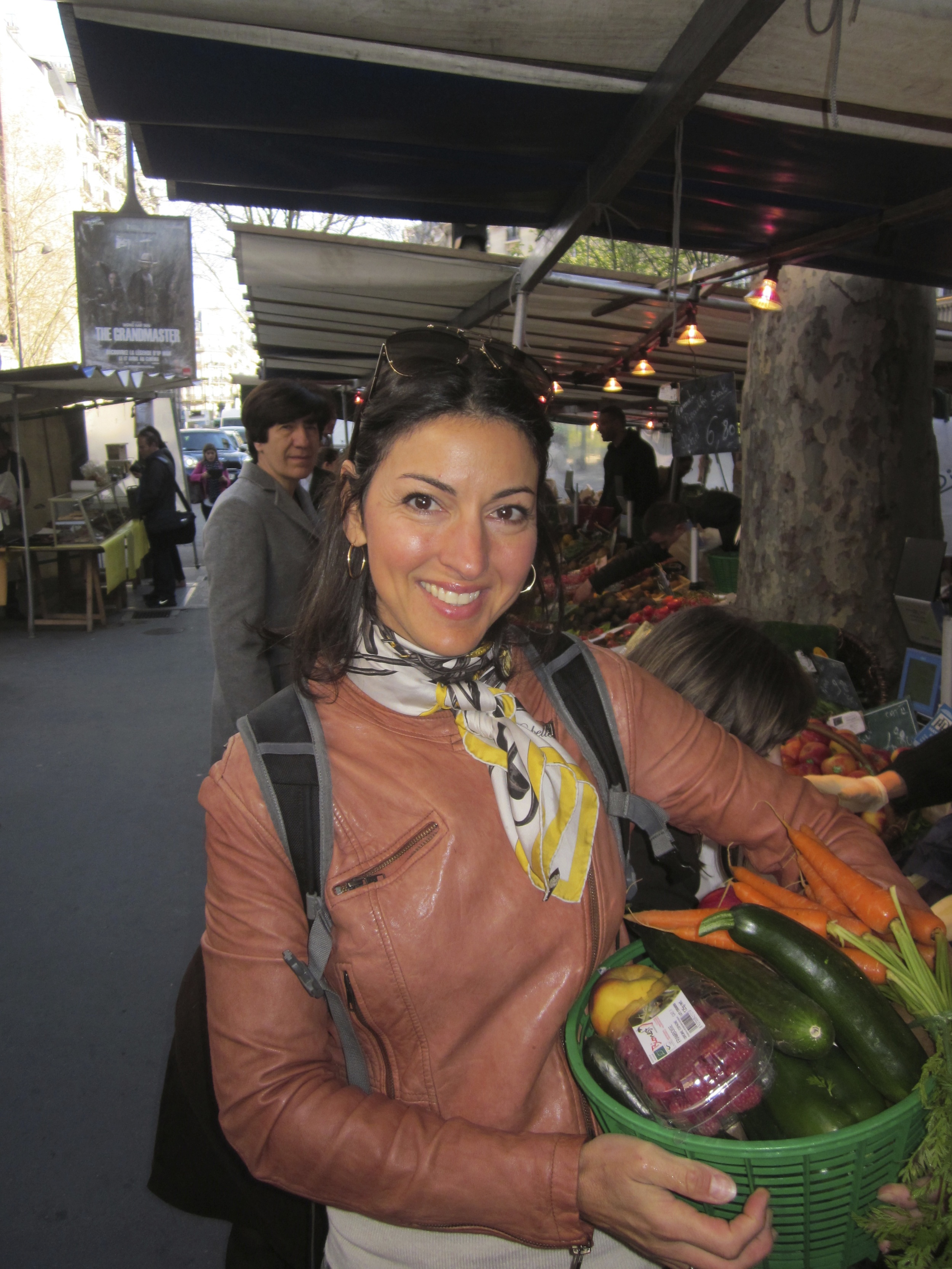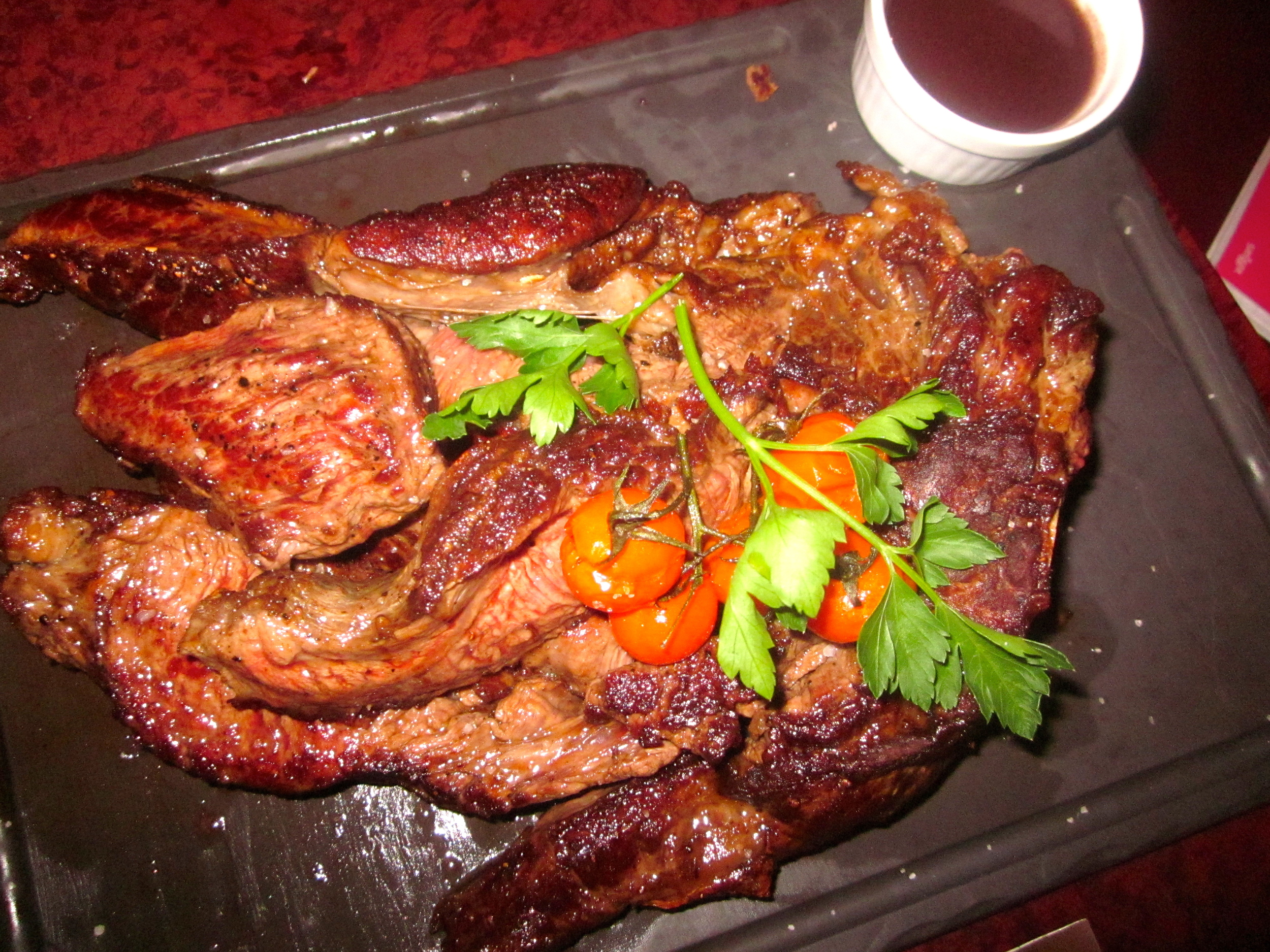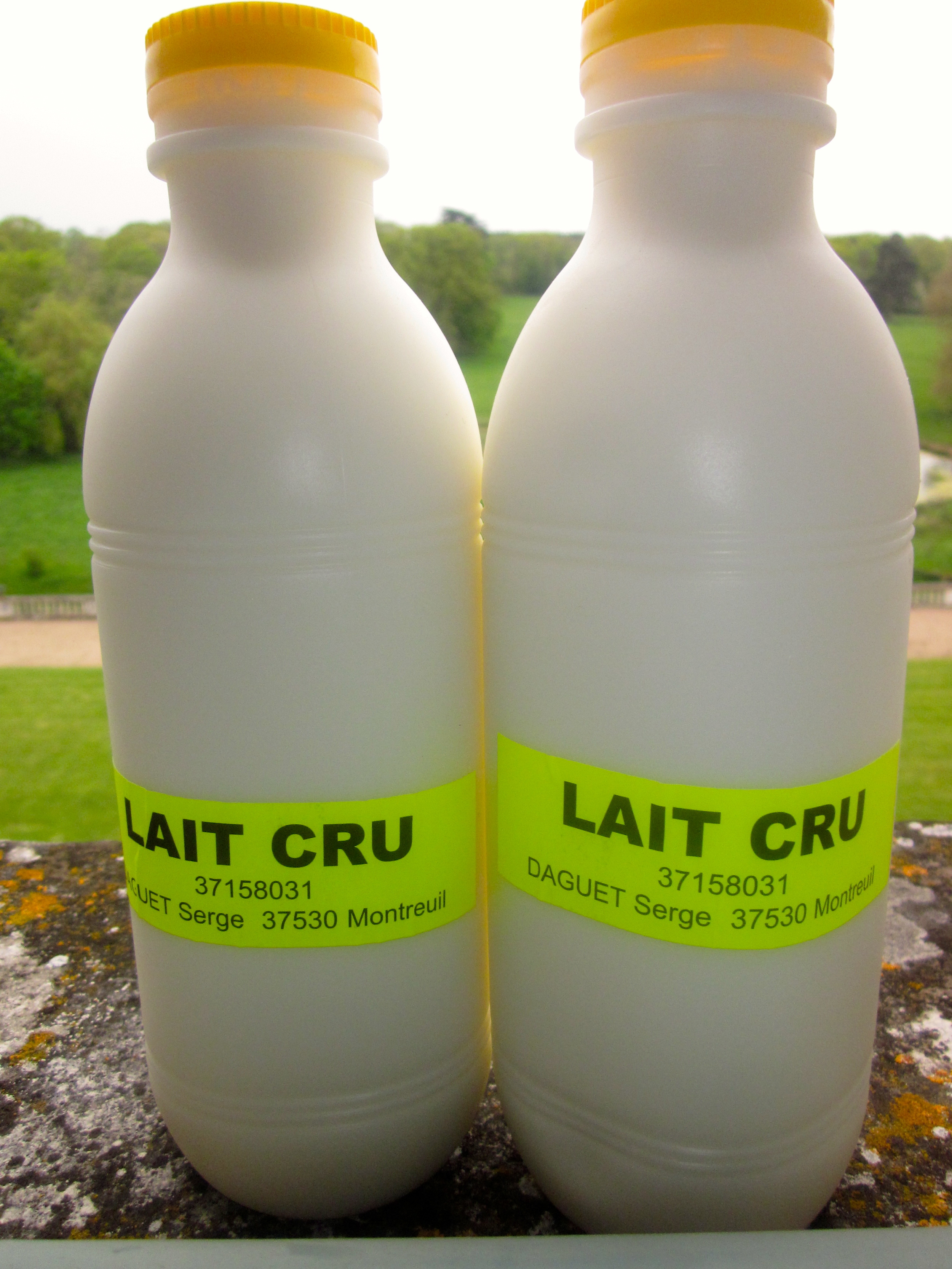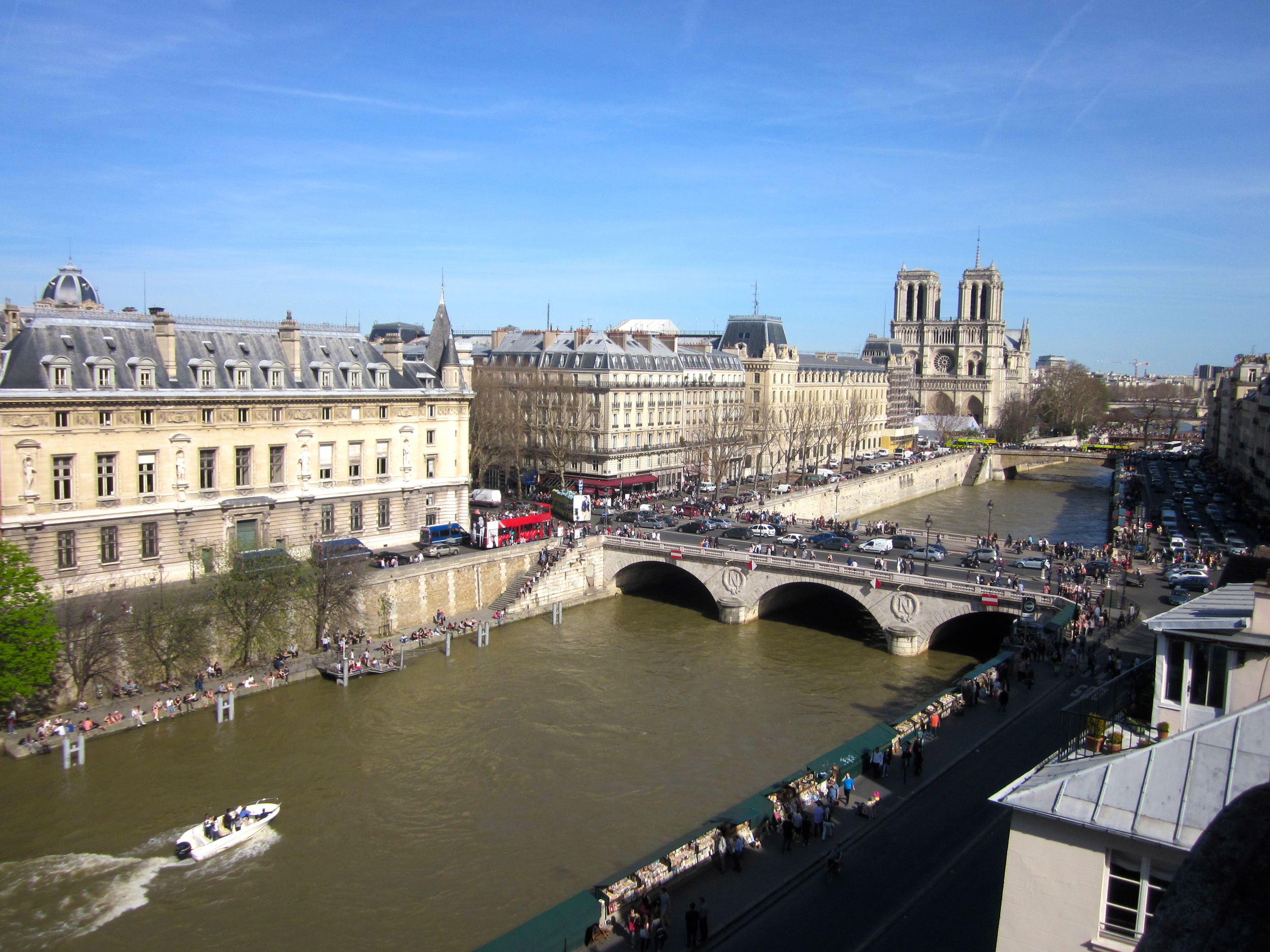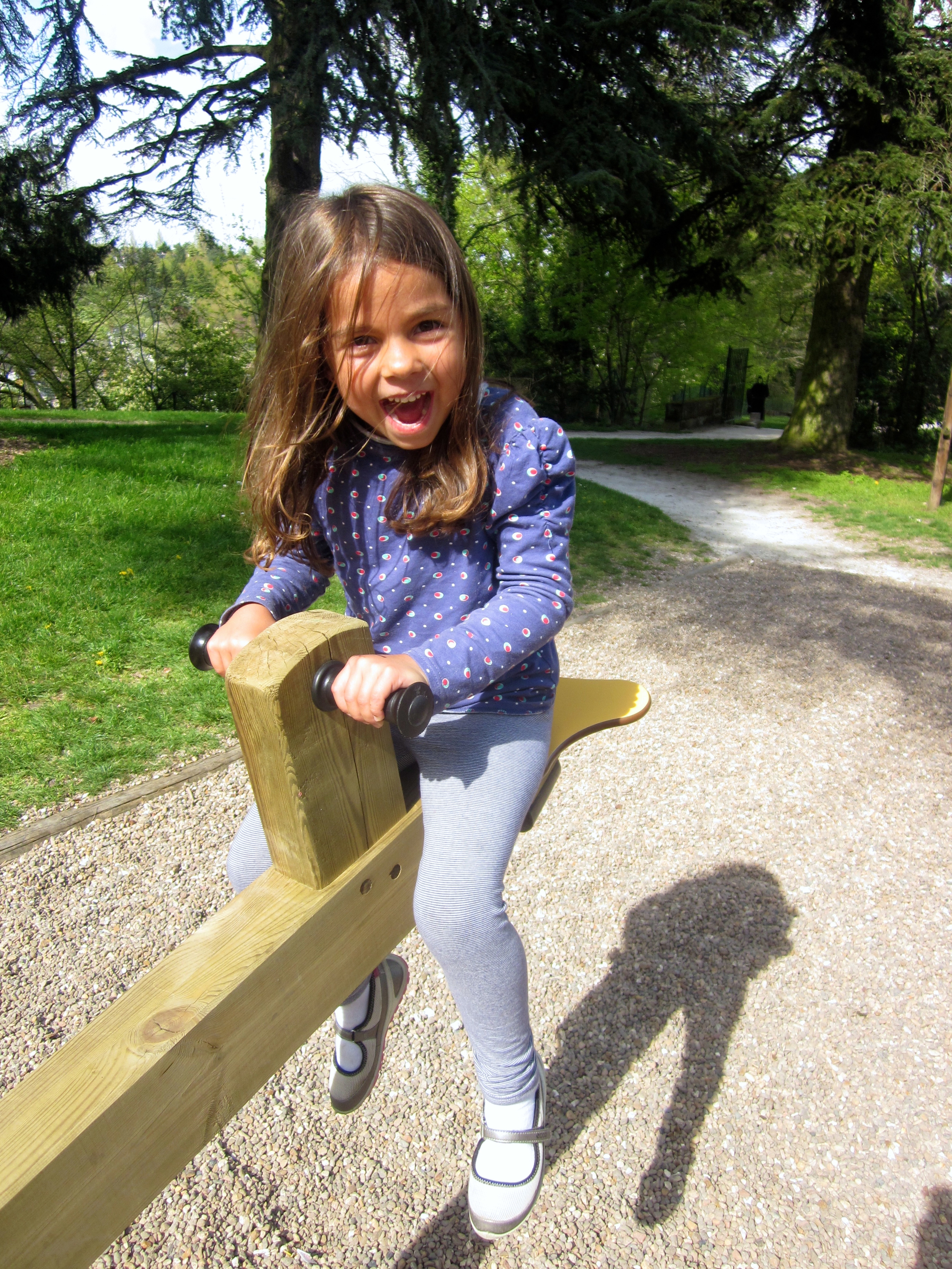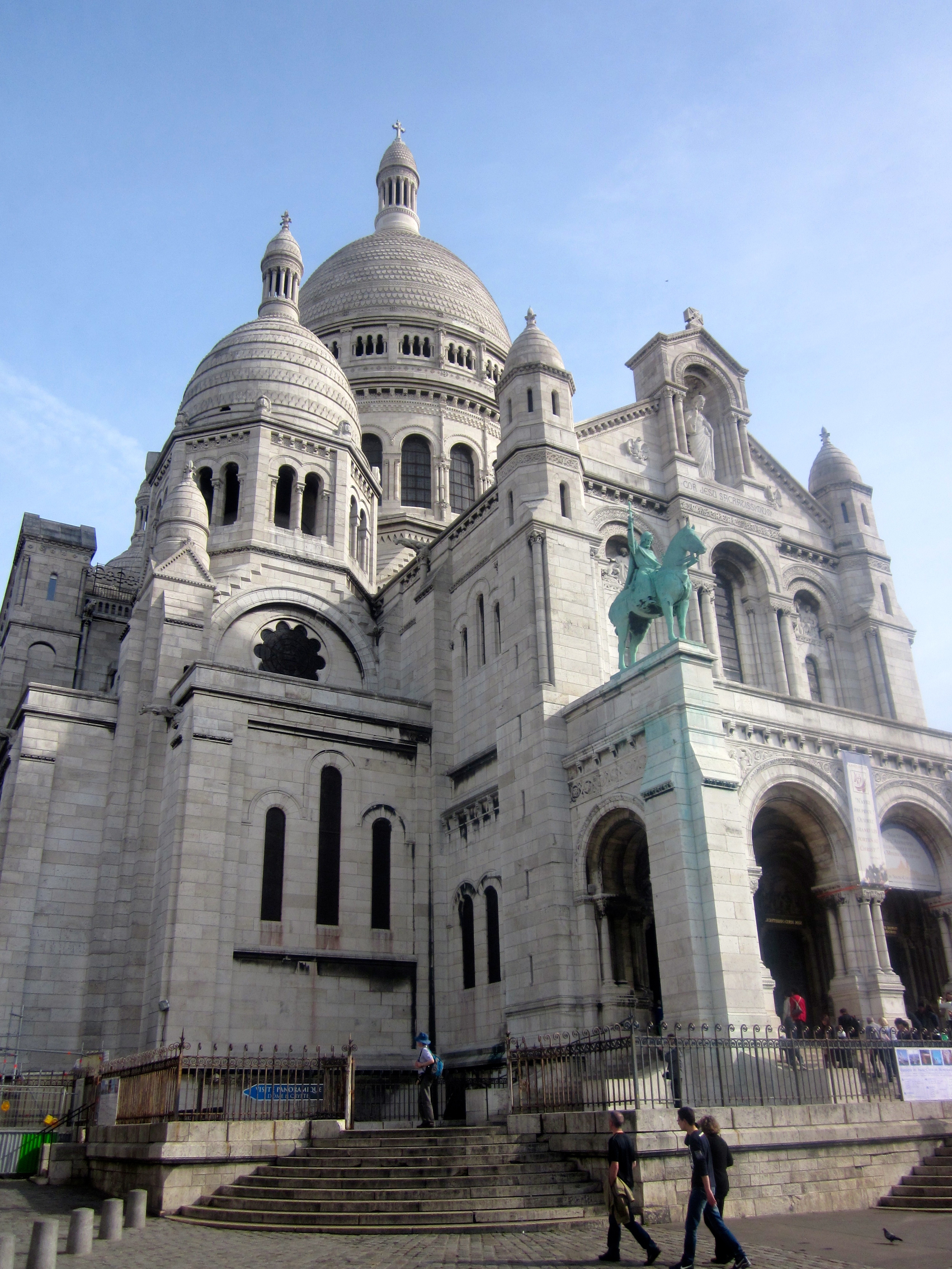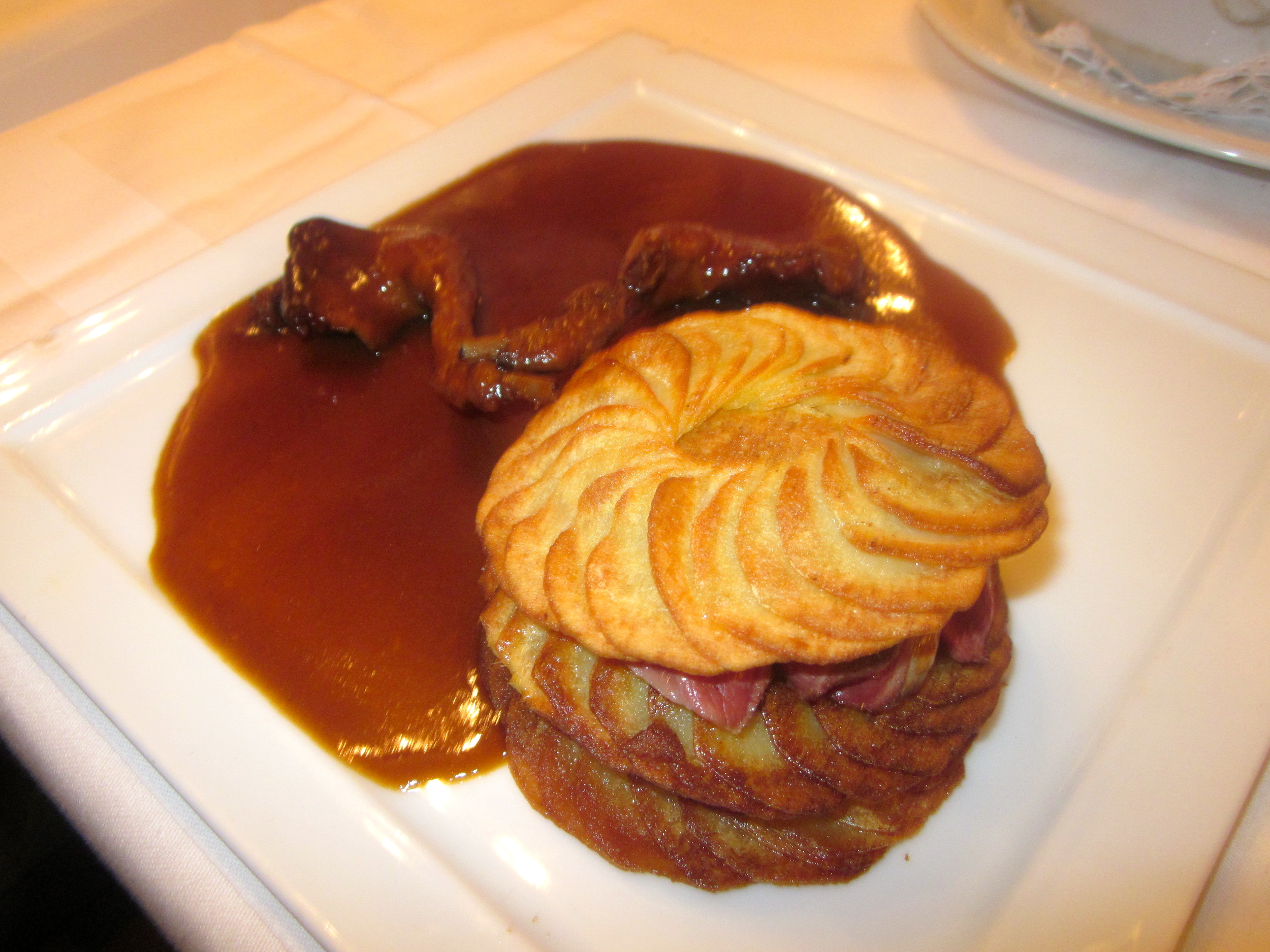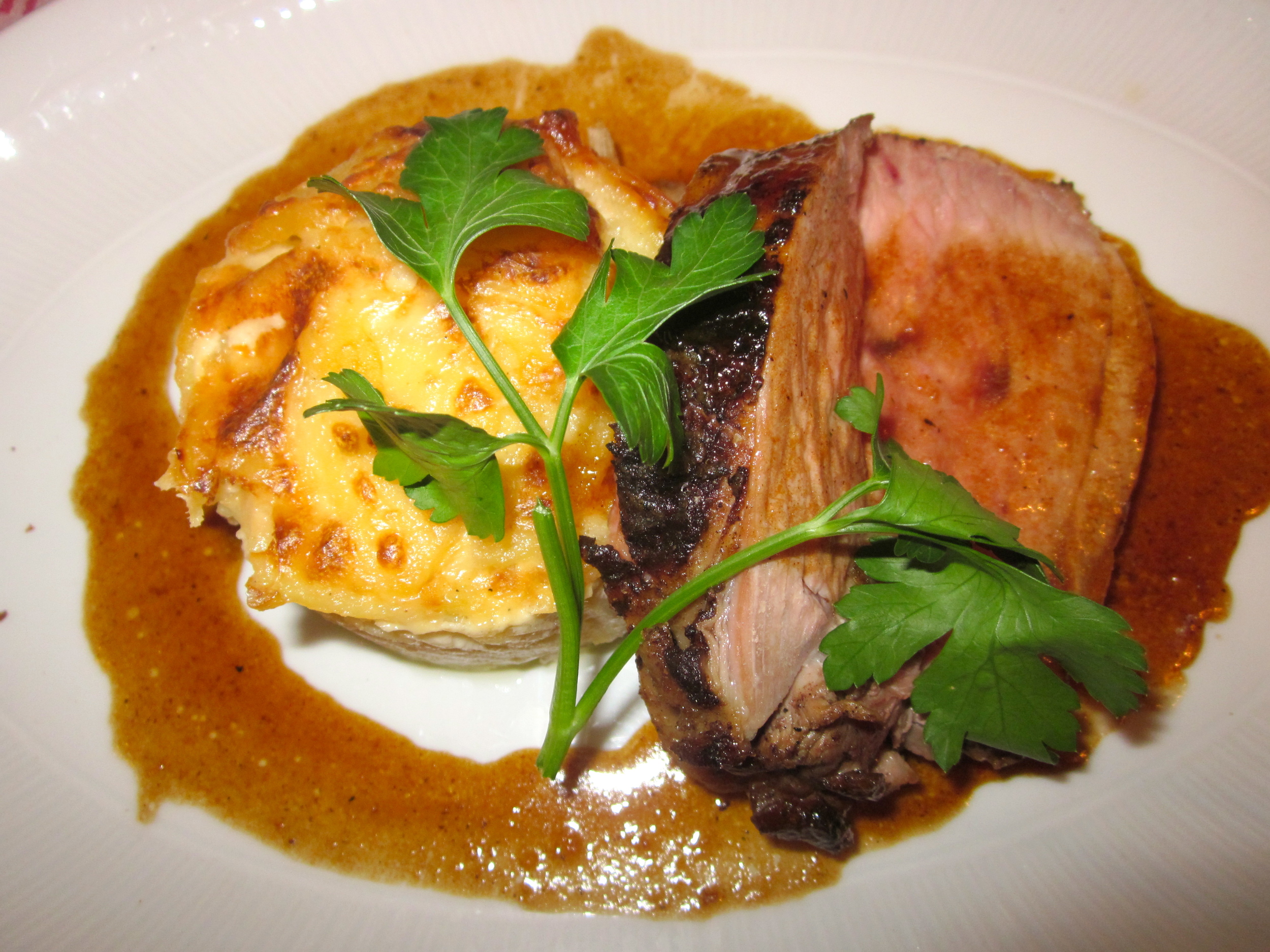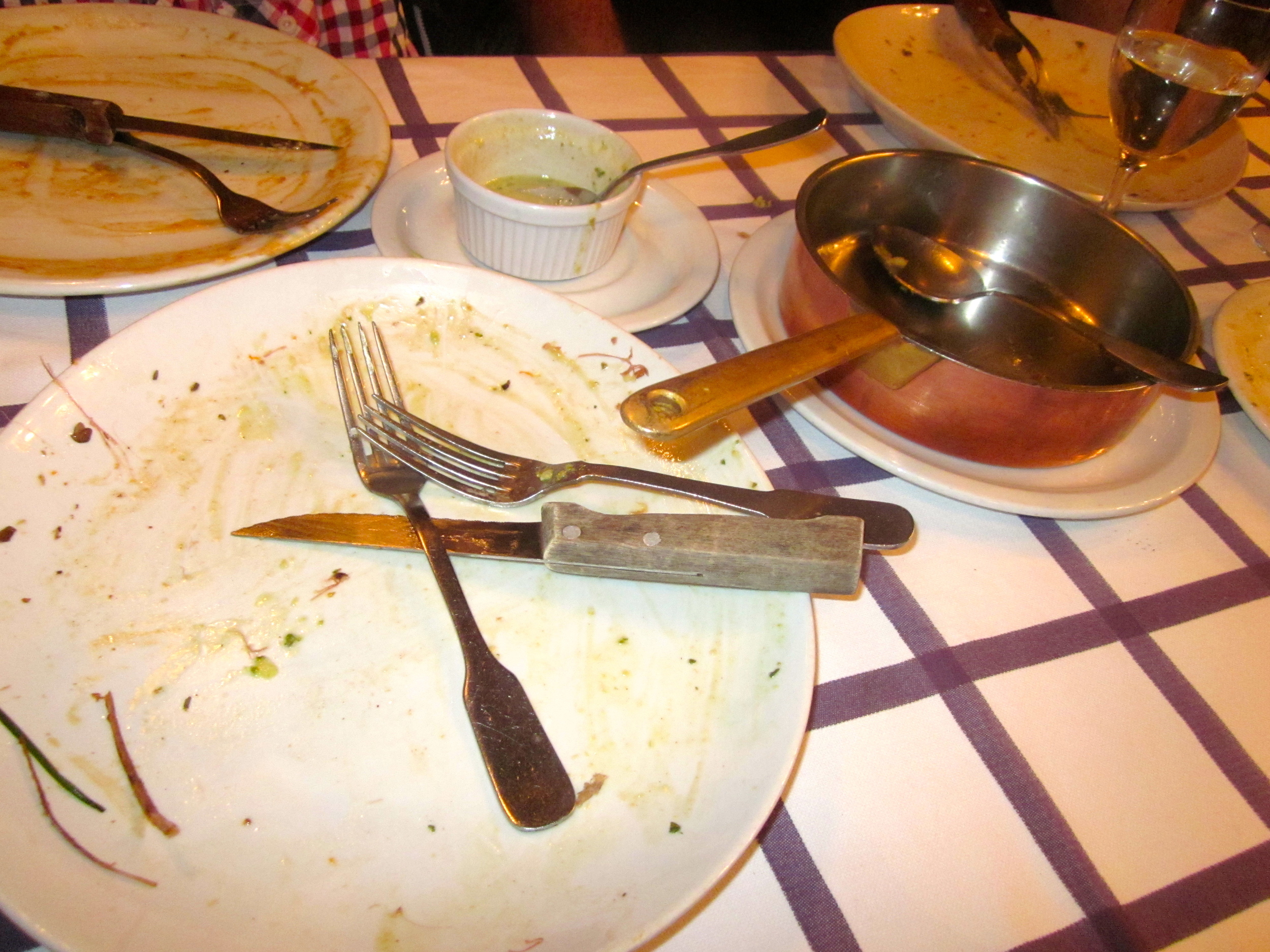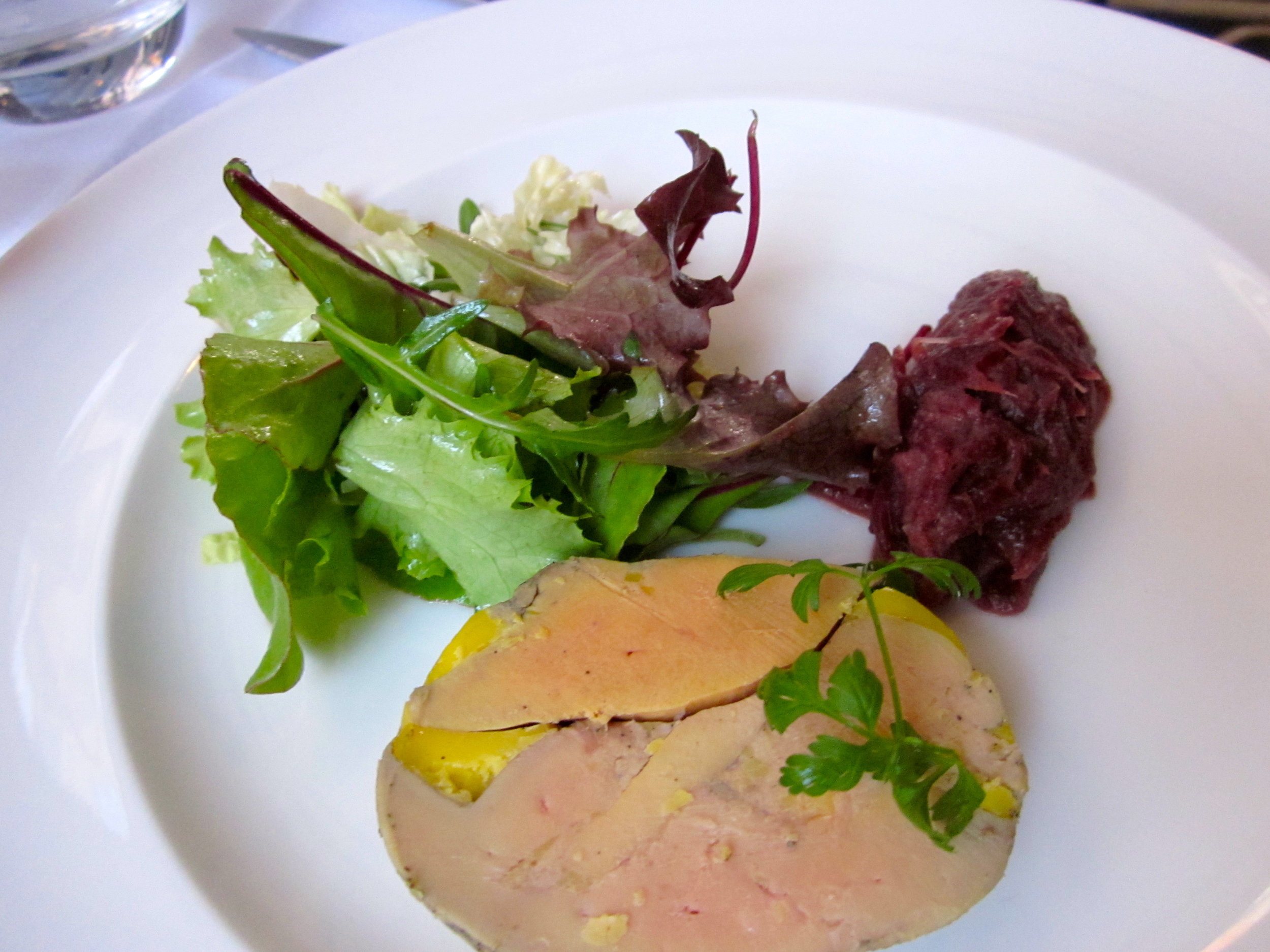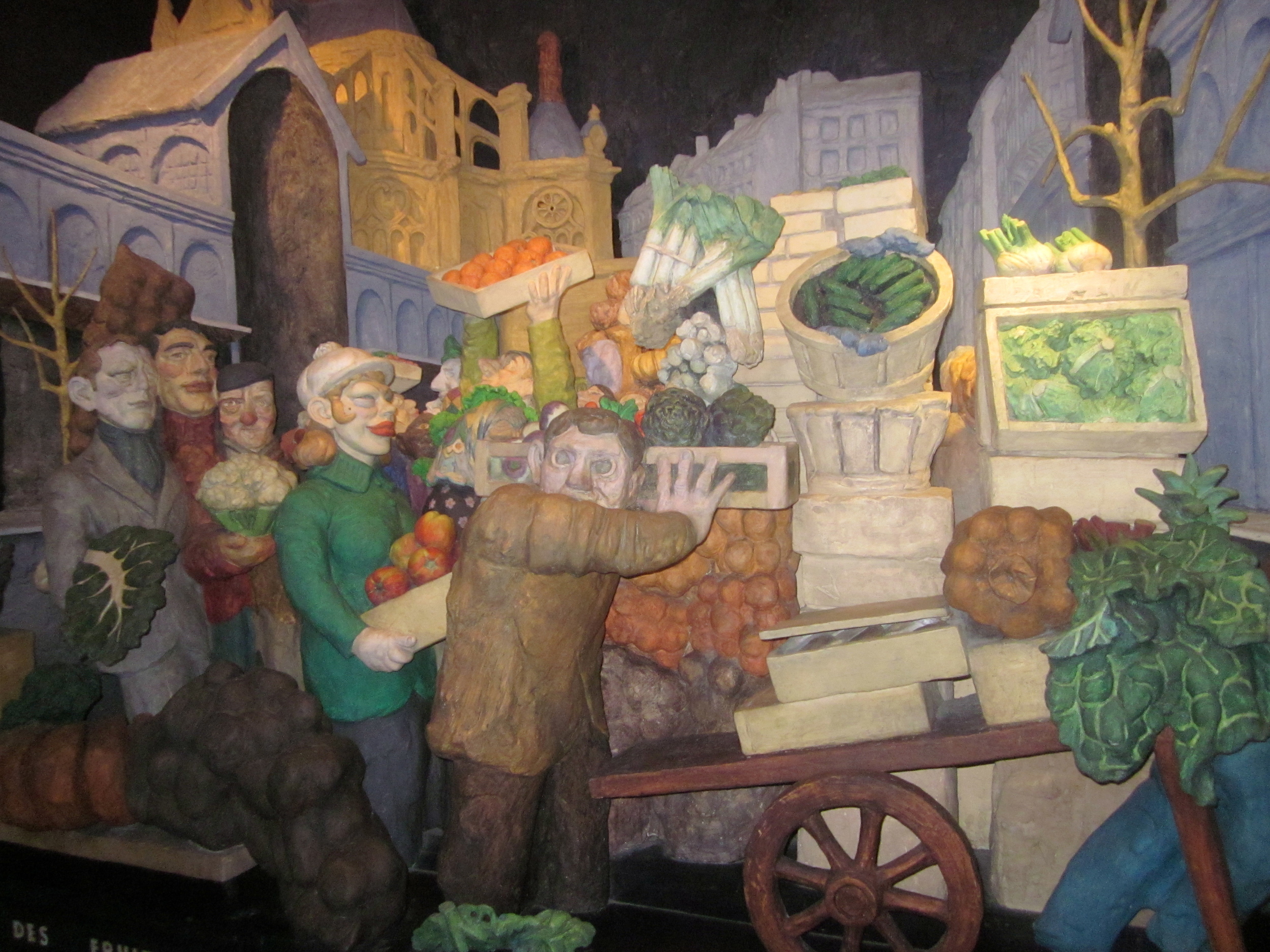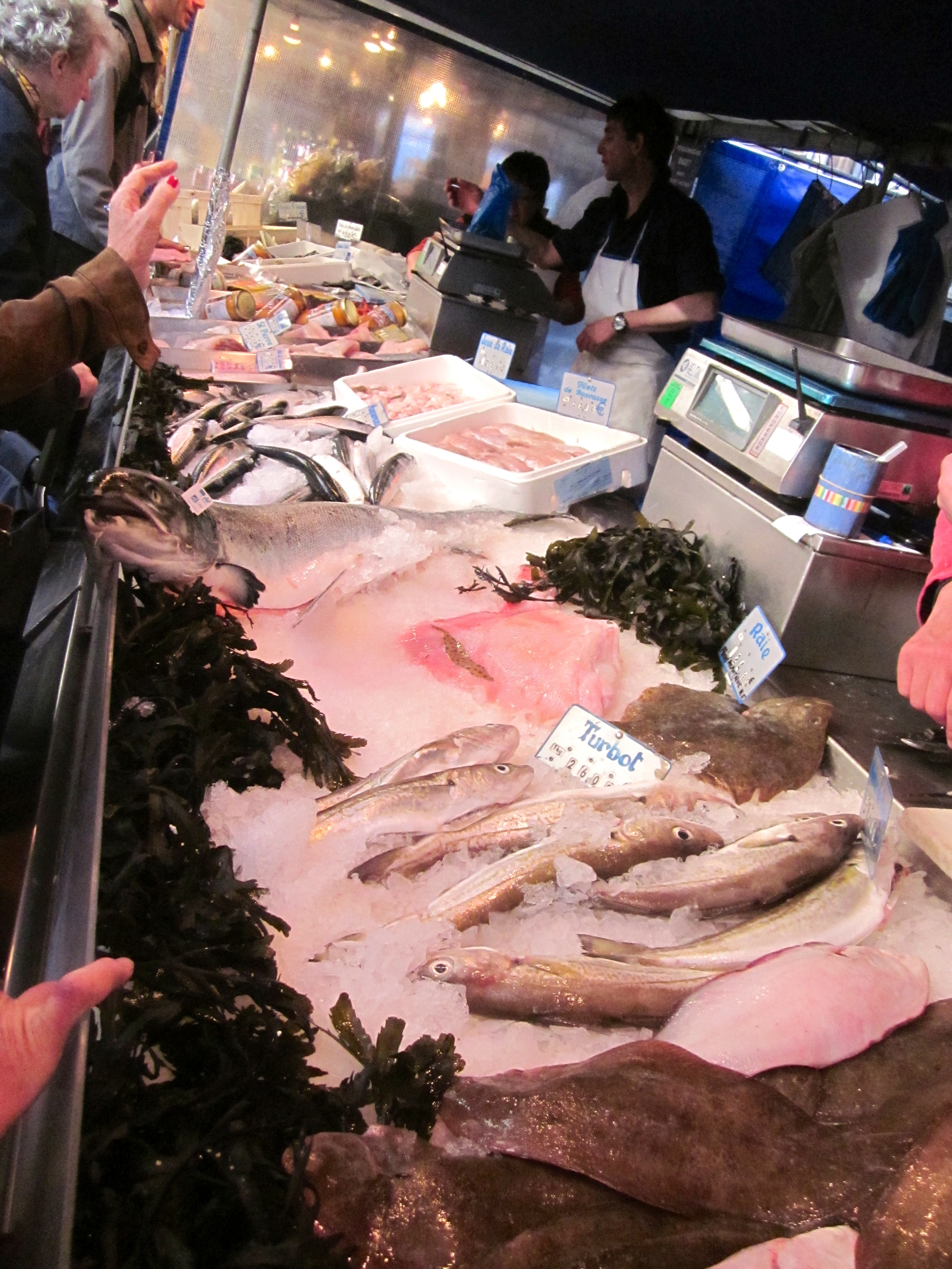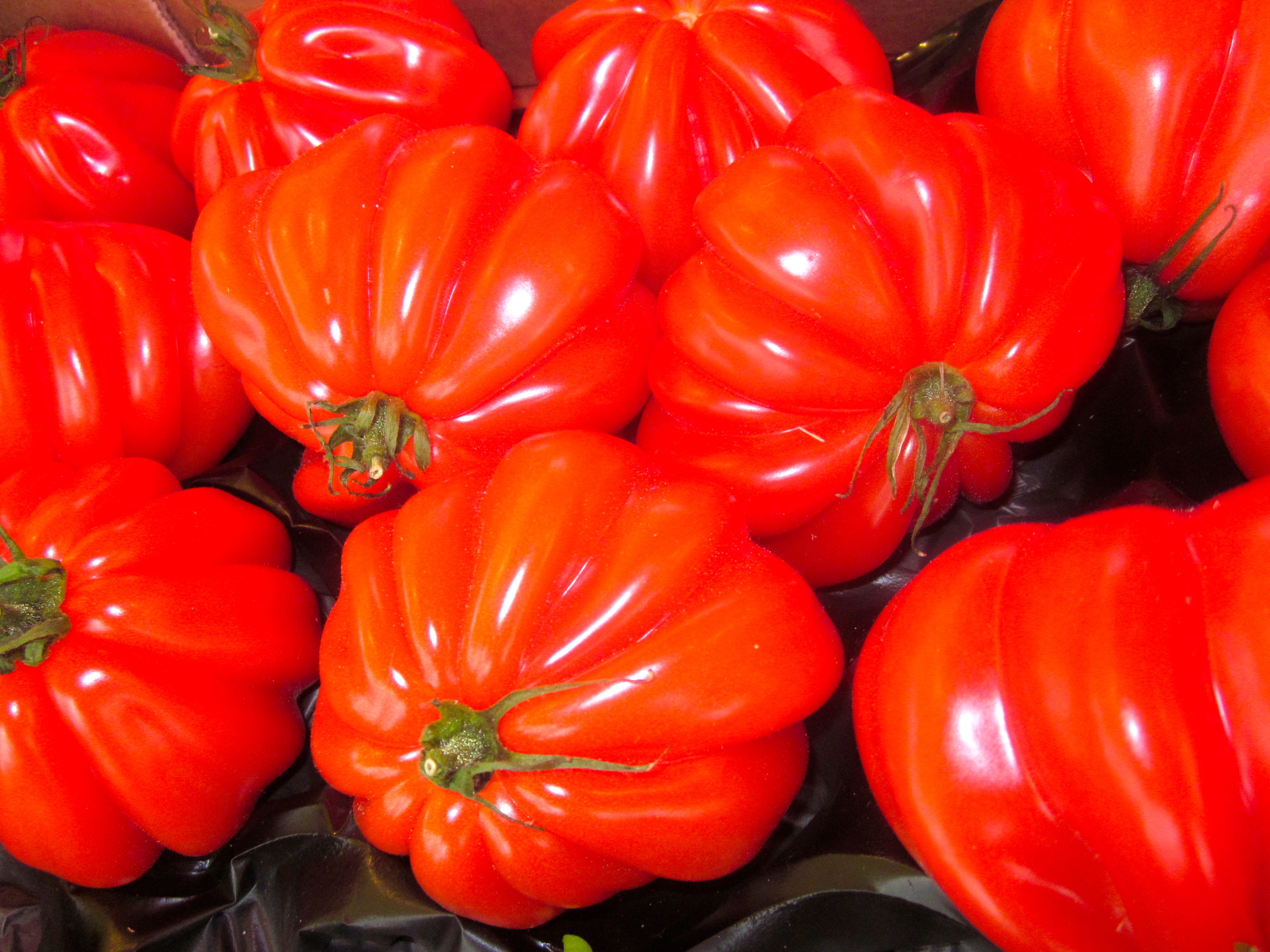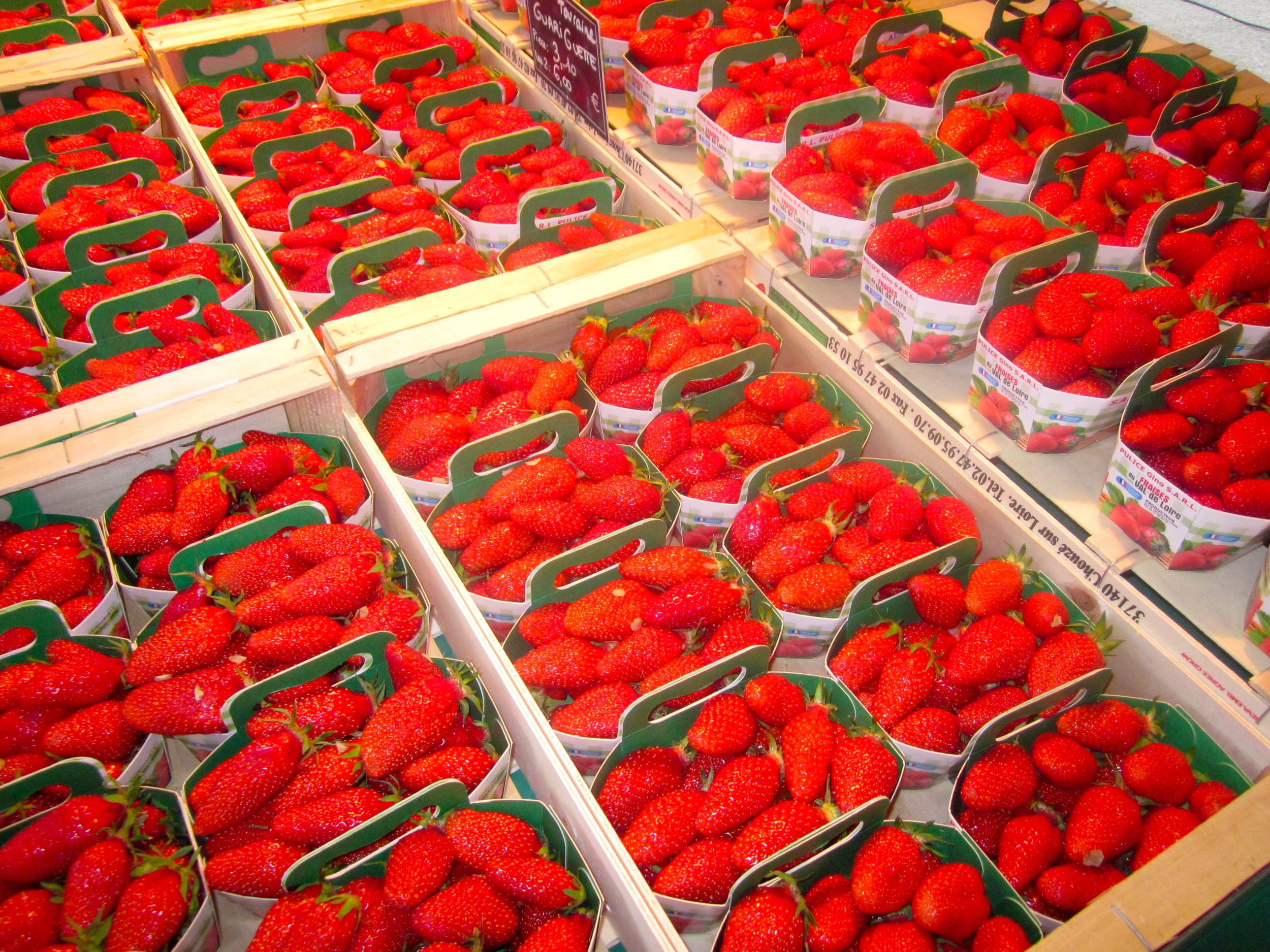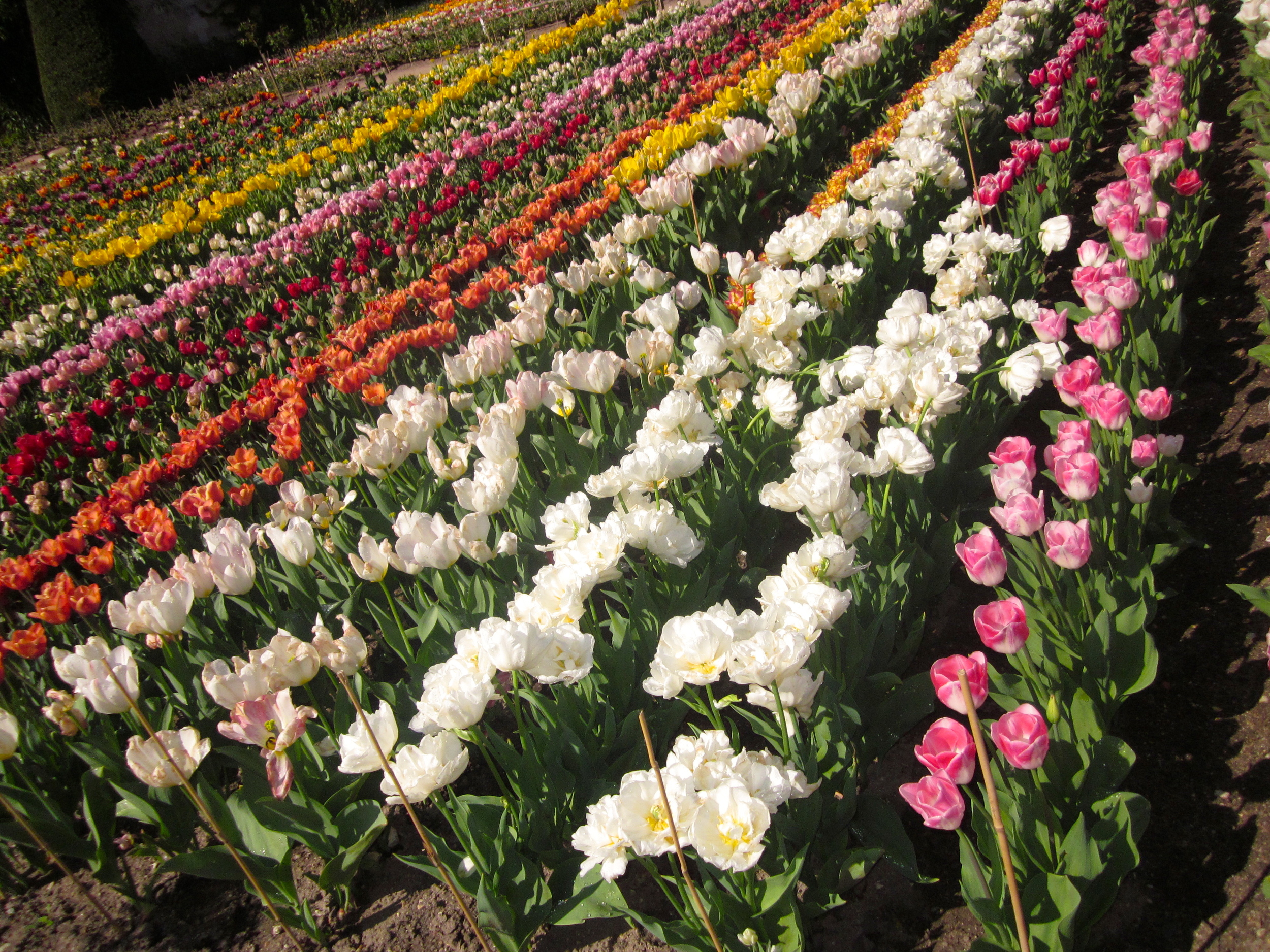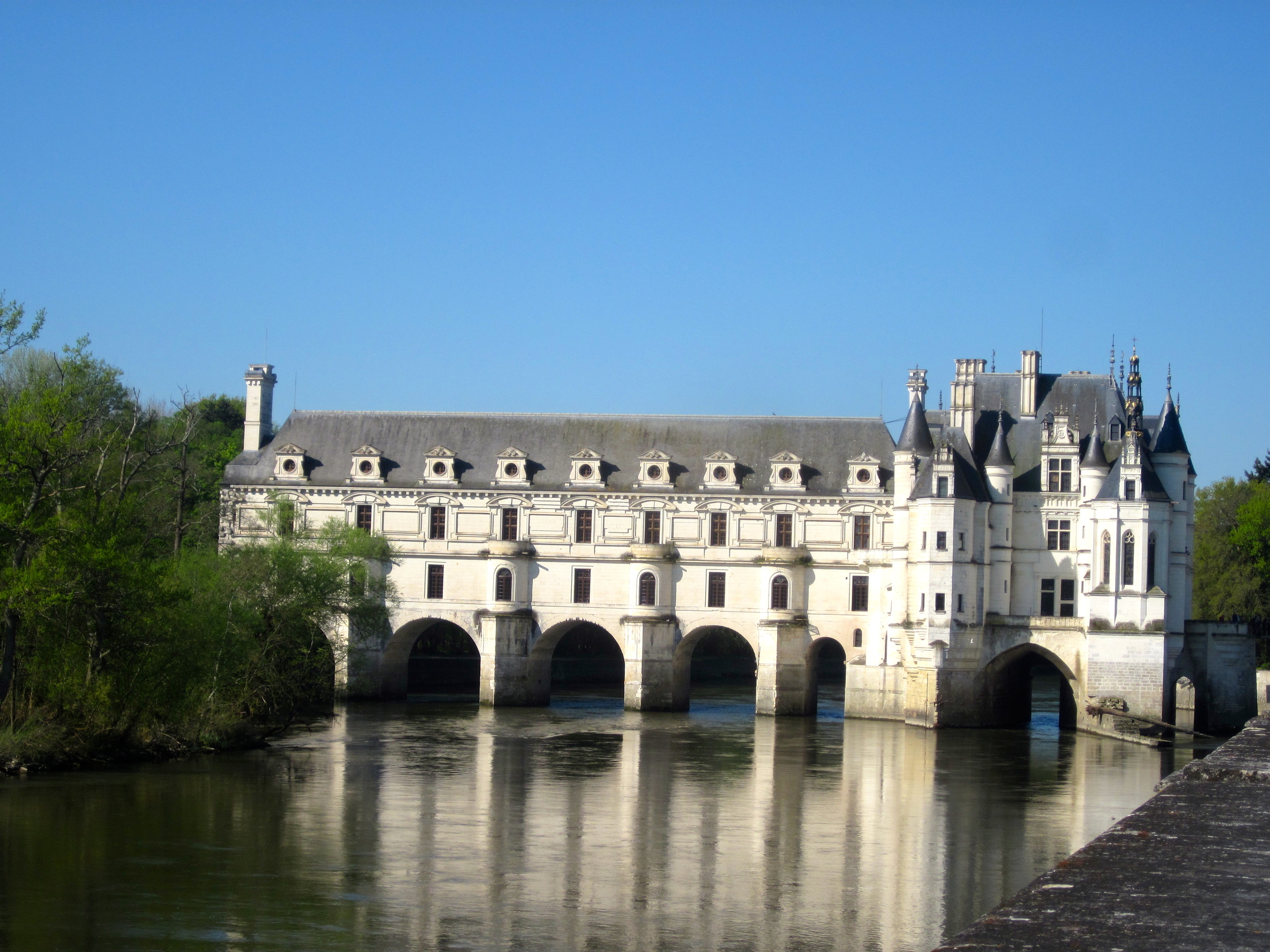Français and fearless gourmet!
I once read that sometimes you have to go away in order to come closer toward home. I have recently returned from a trip to France - 2.5 weeks split between Paris and Loire Valley. My first time to those regions.
I have recently returned from a trip to France - 2.5 weeks split between Paris and Loire Valley. My first time to those regions.
France is my kind of place. It's rich in culture, history, architecture and art, and leads the way in fashion. But for me the real pièce de résistance was, perhaps unsurprisingly, the traditional French cuisine. The French take food seriously. They are devoted to preserving traditional methods of food preparation with quality ingredients. France is gastronomic heaven for a traditional wholefoodie or anyone who appreciates, respects and delights in the wisdom, nourishment and palatability that comes with adherence to age-old culinary traditions...doing things the way they've always been done, with no modern fandangled shortcuts or assaults.
 For the fearless gourmet like myself, I relished in the opportunity to indulge in some very traditional French dishes including:
For the fearless gourmet like myself, I relished in the opportunity to indulge in some very traditional French dishes including:
- snails
- veal head (cheeks, tongue and brain)
- veal liver and kidneys
- pâté - super smooth with endless varieties
- sweetbreads (another type of organ meat)
- pig intestine sausages (chittalings)
- fois gras
- rillettes
- terrines
- frogs legs
- steak tartare
- soufflés
- raw dairy (butter, milk, cheeses, creme fraiche, kefir) which are all legal in France
- wild salmon
- potatoes cooked in duck fat (the yummiest way to eat them!)
Bon appetite anyone?!? I have returned inspired and energised to say the least.
Yes my kids ate all these foods too in accordance with my philosophy that children should eat the same food as their parents from the outset at every meal. Get your kids' taste buds used to eating the full breadth of real food from a young age and they will be adventurous eaters for life. Young bodies recognise and crave nutrient dense food and don't have the psychological barriers to organ meats and other traditional foods that develop with age and local culture.
If I had to choose (and it would be a tough call), the most exceptional meal was pavé le boeuf (thinly sliced stacked beef drowned in creamy mushroom sauce. "Pavé" means paved or cobbled in French). Closely followed by market fresh creme fraiche made with raw milk that was so thick and creamy you could stick a fork in it. We didn't have a bad meal but I confess that I found my limit with pig intestine sausages- it was their intense farm smell (I ate them nonetheless - so I guess I was challenged but not entirely defeated!).
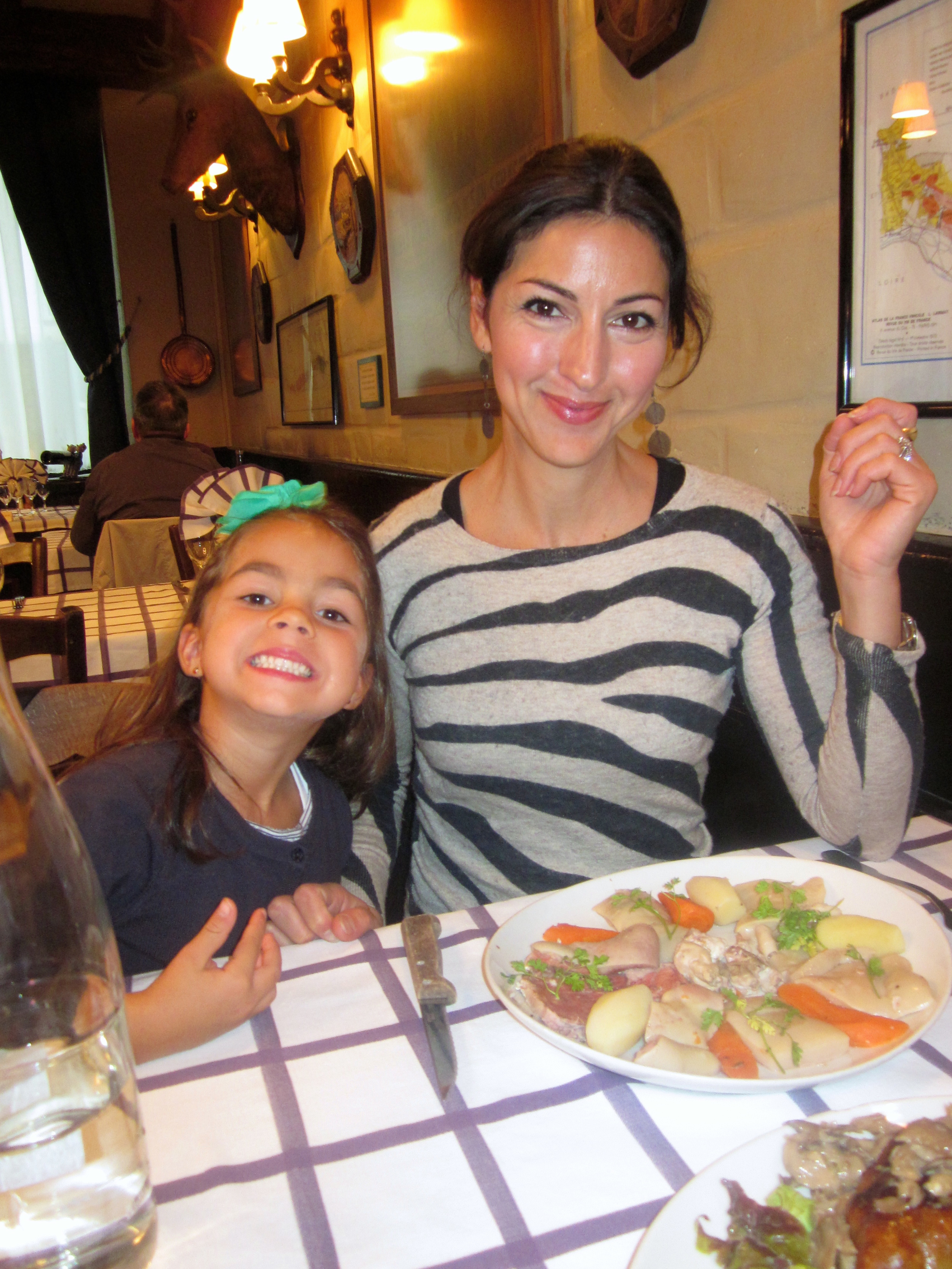 Our plan of gastronomic attack in France was 1 or 2 meals a day out at restaurants and 1 or 2 meals a day cobbled together at our apartment or eaten outdoors as picnic lunch. Meals we put together consisted of cheese, cold meats (eg pâté, terrine, salami, jamon), veggie sticks, fruit, eggs, milk, yogurt and butter. I bought this food at:
Our plan of gastronomic attack in France was 1 or 2 meals a day out at restaurants and 1 or 2 meals a day cobbled together at our apartment or eaten outdoors as picnic lunch. Meals we put together consisted of cheese, cold meats (eg pâté, terrine, salami, jamon), veggie sticks, fruit, eggs, milk, yogurt and butter. I bought this food at:
1. Farmers markets- these can be found many days of the week even in small towns. The Paris organic farmers markets every Sunday is beyond impressive.
2. local supermarkets - the deli section of the local supermarkets have a far more extensive range of cheeses and preserved meats than any gourmet Aussie deli. Cheeses in France are very conveniently labelled as being made with either raw or pasteurised milk. Handy :-) Paradoxically, only a handful of raw cheeses are legal in Australia. It afforded me the opportunity to try a range of raw milk cheeses for the very first time like raw milk chevre, blue vein and brie. Milk, kefir, and yogurts - all from raw milk- are sold at local supermarkets. I pick up bottles of raw milk for a mere 1 euro/litre!! Yep, greater market scale drives down price. 3. dedicated organic stores.
 I found eating out in France a relaxed and pleasurable experience for a host of reasons:
I found eating out in France a relaxed and pleasurable experience for a host of reasons:
- trans fats are banned (Australia and USA lag behind the rest of the first world in this respect).
- traditional restaurants cook in butter or animal fat (and only use vegetable oils for deep fried food like fries).
- traditional meals at affordable prices can readily be found. Even the most humble run of the mill garden type variety local bistro had at least 3-4 different offerings of offal on its menu (notably pâté, fois gras, kidney, calf liver).
- there are very few grain or legume based meals. Soup, meat, vegetables and dairy are the staples.See photos of sample menu in the photo gallery below to get an idea of what's on offer at a typical traditional bistro.
- the vast majority of restaurants offer sourdough (instead of yeasted) bread with real butter (as opposed to margarine).
So the hardship was deciding which meal to choose from a vast selection of available dishes (in contrast to Australia where meals are quickly narrowed down to 1 or 2 or if I'm lucky maybe 3 on a menu once the grain based meals, deep fried food and farmed fish are all ruled out). If only this was the sum total of my problems in life!
How I choose the restaurants:
- most of the restaurants we ate at were recommended by the Paris Food Guide found on the Internet (I only went to the restaurants under the heading of cassoulets and classic bistros. I tend to avoid modern French as fancy foams were not my priority when traditional French cuisine was on offer).
- a couple of restaurants were recommended by friends, the Lonely Plant Guide to France and tripadvisor.com
When travelling and eating out I don't get hung up at all about organic certifications or if the meat is grass and not grain fed etc. If I come across it then great otherwise I go for the whole food source whether its organic or not. The "good enough" principle. I do however try to avoid vegetable oils and trans fats but in France this was not an issue (so long as you avoid the French fries).
Travel tips: 1. We managed to get through both international air flights (over 24 hours including transfers and airport waiting time) without having succumbing to plane food by taking our own food with us on the plane. Yes this does mean one back pack is filled to brim with food to cater 3 or more meals for family of 4 but for me it's worth it when I took 1 glance at airplane good and means I didn't feel ill when I arrived at my destination. What we took included hard boiled eggs, veggie sticks, cheeses, fruit, activated nuts, date coconut balls, cooked crispy bacon, tinned wild fish (ensure each tin is less than 100g weight for security purposes), salami and sachets of coconut butter (the brand of coconut butter is Artisana - sold at About Life- and contains only 1 ingredient- coconuts! I'm not a fan of packaged food but for plane trips this is a good source of yummy saturated fats in easy travel form).
2. I took a small container of sea salt to add to bottled water we purchased. Adding salt keeps the salt concentration of your blood stable and adds back minerals lost through filtration with added benefit of preventing unnecessary frequent toilet trips (especially important with young kids!). Read one of my earlier posts here about the importance of adding salt to your water.
3. I took a bottle of Green Pastures fermented cod liver oil with us to keep up our daily dose of omega 3 oils and vitamin A, D and K to ensure strong immunity - especially important for kids. The bottle needs refrigeration once opened.
4. I took a jar of coconut oil to use as body moisturiser (and to maintain daily oil pulling).
5. The French eat at regimented meal times. Make sure you are seated at a restaurant between 12pm-2pm for lunch otherwise the kitchen is closed (we learnt the hard way!). For smaller places that fill up quick get there before 1pm. 6. I got my kids (aged 5 and 7) to carry their own backpacks with things to entertain themselves when waiting at restaurants, long car trips or in quese etc. Cameras are great for kids when they are old enough (eg over 6) to take their own photos and are good source of amusement. As is sketch pad, activity book and pencils.
7. I bought plastic spoons and forks and a pocket knife from a local supermarket for stay at home meals.
8. the French fall short with breakfast. Bacon and eggs with sides of buttery spinach and avocado is pretty much non existent in France. Instead you'll get bread based selection of pastries, brioche croissants, jams and chocolate milk. If this sugar-laced wake-up call doesn't appeal, cook your own brekky if you have a kitchen or if all you have is a mini bar fridge then keep a stash of cheese, cherry tomatoes, cold meats, fruit and dairy items (eg kefir, yogurt, milk) for a quick non-cooked but hearty brekky.
6. I got my kids (aged 5 and 7) to carry their own backpacks with things to entertain themselves when waiting at restaurants, long car trips or in quese etc. Cameras are great for kids when they are old enough (eg over 6) to take their own photos and are good source of amusement. As is sketch pad, activity book and pencils.
7. I bought plastic spoons and forks and a pocket knife from a local supermarket for stay at home meals.
8. the French fall short with breakfast. Bacon and eggs with sides of buttery spinach and avocado is pretty much non existent in France. Instead you'll get bread based selection of pastries, brioche croissants, jams and chocolate milk. If this sugar-laced wake-up call doesn't appeal, cook your own brekky if you have a kitchen or if all you have is a mini bar fridge then keep a stash of cheese, cherry tomatoes, cold meats, fruit and dairy items (eg kefir, yogurt, milk) for a quick non-cooked but hearty brekky.
9. Unfortunately many meals at restaurants come with fries (not mentioned on menu) which are deep fried in harmful vegetable oils so after a while I remembered to add a caveat of "no frites" when ordering. Most meat dishes come with potatoes so after a week of no leafy greens or above ground veggies I started to request a big green leafy salad with mains. 10. Unlike the italians, the French are not coffee connosoirs. Most coffee is made by a machine as opposed to a barista and many places (even those with baristas) serve cafe au lait (milk coffee) with UHT milk (instead of fresh milk) which tastes revolting (and is very unhealthy as UHT is heavily processed and striped of all goodness). I opted for espressos instead after my first mistake.
11. I had a French customer write the names of basic food items in French that I could hand over to organic stores or supermarkets when purchasing staples like organic full fat raw milk, raw butter, full fat yogurt, kefir, pastured eggs etc. Merci Julien!!
Food aside, other observations:
1. Affordable accommodation: in Paris we stayed at someones apartment in the heart of Paris who hires out their apartment on airbnb.com - it affords all of the conveniences of a home (kitchen, laundry etc) at twice the size of hotel room for half the price. I highly recommend this option especially with kids if you don't want to eat out 3 means a day and want to do your own laundry. It meant we could have a cooked brekky and eat either lunch or dinner in. In Loire valley we stayed at a chateaux (small castle) where we also had access to communal fridge and laundry.
2. France is great for kids:
-
Playgrounds and carousels in Paris are awesome compared to Australia (there's an element of excitement in the old fashioned equipment that I recall from my youth that has been eclipsed with Australia's ultra conservative safety standards).
- Some parks offer traditional kids activities and games eg sailing boats.
- The extensive and vast gardens of the Chateaux in the Loire valley afford kids the opportunity to run and tumble and some have fabulous old-fashioned playgrounds complete with treehouses and equipment inspired by Leonardo da Vinci.
- My kids love visiting the medieval chateaux and gazing at 600 year old fairy-tale castles complete with turrets, towers, flags, crenelated ramparts, draw bridges, moats, stone corridors, dungeons, double helix staircases, stained glass windows and grand ball rooms. Kids - big ones too- can let their imaginations run wild daydreaming of galant knights in shining armour and kings on thrones planning defences against invading armies. The cold stony walls of these grand castles are riddled with tales of bloodshed, romance, tragedy, revolution and conspiracy.
-
We happened upon magic shows and medieval caves that provided hours of amusement for little ones.
- France is very easy to navigate - street names are cemented on all corner buildings, the cities are well planned and signposted - all of which makes travelling (with or without kids) so much easier.
- Unlike the Italians, Greeks and Spaniards who eat dinner very late (10pm or later) the French eat dinner from 7pm so kids can be in bed by 8.30pm assuming prompt service.
3. French people are friendly. They have an ill-founded rep of being arrogant. Compared to the Italians, Greeks and Spaniards, I would say the French are more helpful, friendly and courteous hands down. I think their pride is often mistaken for arrogance. My lack of French wasn't frowned upon and most people speak just enough English so that communication was never a real issue.
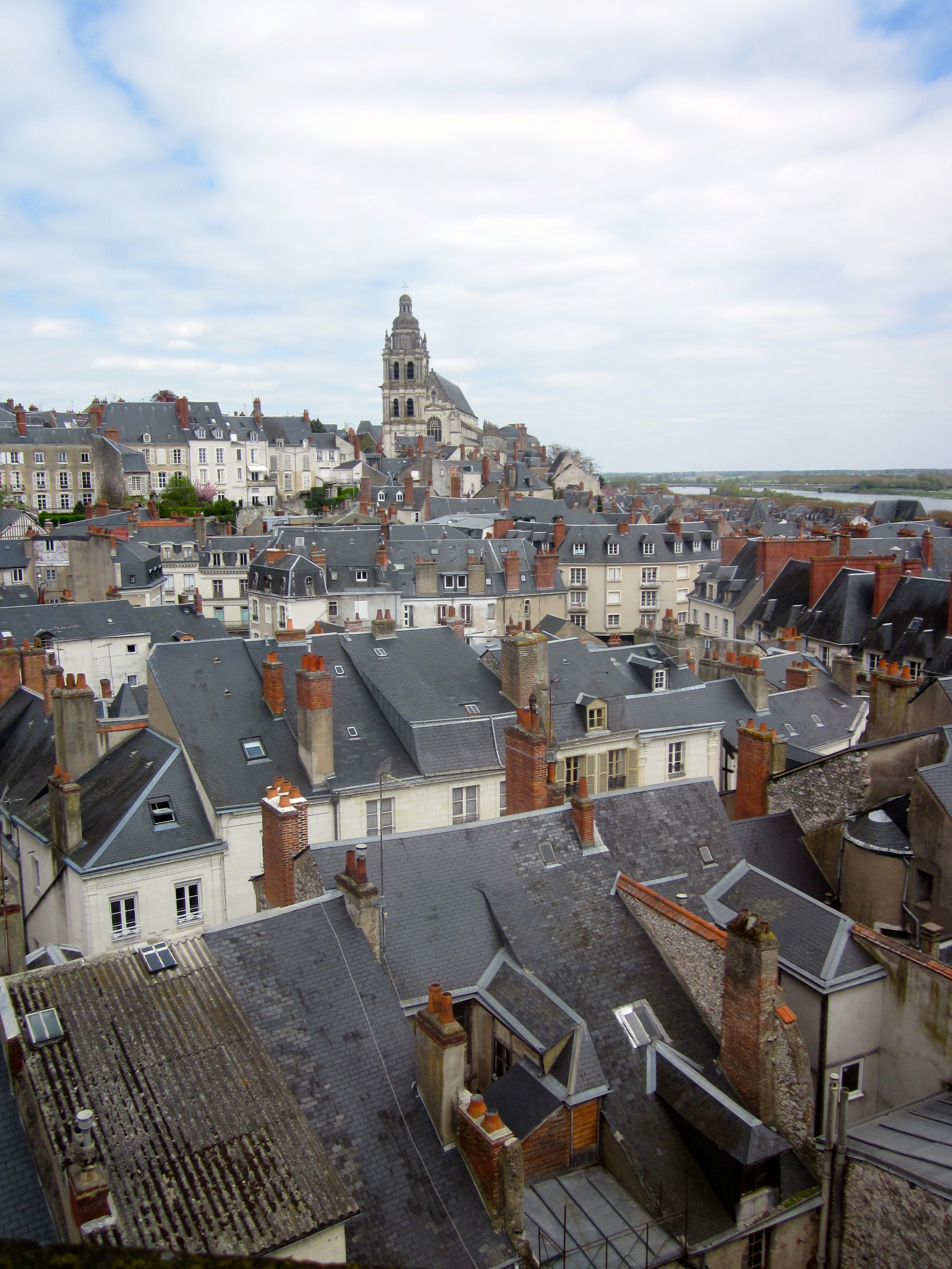
4. The French age well. Maybe there's something in all that butter, creamy sauces, raw dairy, broth based soups and organ meats they are eating that gives them a healthy glow and happy disposition. I can't say the same for the Spaniards when I visited 18 months ago. As a country to visit, Spain rocks, but my research, personal experience and observations have all led me to believe that it's really natural saturated fats (and not olive oil) that's the elixir to vibrant health.
5. While Italy, Greece and Spain (which I equally adore) are more gritty, colourful, fun and sexy, France is stunning, sophisticated and refined. Neutral-coloured well-preserved buildings, clean pavements, and well heeled locals.... the French have a lot of class and take pride not only in preserving their traditional cuisine but seemingly in all that they do.
One piece of trivia I learnt: In medieval France before table legs were invented, the servants would set table tops (benches) on top of trestles to form a table. This is the origin of the expression "to set the table".
If you are like me and find beach holidays like Hayman island, Fiji and Bali a little, well, boring (I have Bronte beach at my doorstep after all) and want a holiday steeped in culture, nourishing food traditionally prepared, plus is interesting for kids, then I highly recommend France as offering something for everyone. Spring is good time of year to visit (cooler than our Spring) and less crowded than summer I imagine.
For more info on my recent travels in France please don't hesitate to contact me.
Before I bid you "Au Revoir" I would love to hear from you- where's your favourite holiday destination be it far afield or close to home (especially one that's kid friendly, interesting for adults and offers traditional wholefoods)?
Photo Gallery below with more photos:
Meals:
- From the Louvre:
Farmers markets:
Chateux (castles) of the Loire Valley:


